Capsicum, also called ornamental pepper, is a member of the Solanaceae family. This annual or perennial is native to South and Central America. This genus is often confused with the genus Piper, which belongs to the Pepper family, they have the same name.
Capsicum is a semi-shrub or shrub that is an annual or perennial. Solid sheet plates are all-edge. Paired or single flowers are formed in the fork of the leaf plates, they have a purple or white color. Elongated fruits are often colored red, but they can also be green, yellow or white.
Capsicum care at home
Lighting
Capsicum needs to provide good lighting, while the light must be necessarily diffused. If direct sunlight falls on the sheet plates, burns may appear on their surface. In summer, experts advise capsicum bushes to be transferred to the street, while they must be placed in a shaded place. In autumn and winter, the bushes will need sufficiently bright lighting, otherwise they will become elongated and lose their decorative effect.
Temperature regime
Throughout the year, in a room where such a plant is located, the air temperature should be moderate (from 20 to 25 degrees). Also, this room must be systematically ventilated. In the event that in winter it is impossible for the bushes to provide a sufficient amount of light, then they should be rearranged to a cool place (about 15 degrees).
Air humidity
Such a plant should be provided with increased air humidity. To do this, it must be moistened with a sprayer every day. And the pot with capsicum can be placed on a pallet, which is filled with moistened expanded clay.
How to water
In spring and summer, such a plant should be provided with abundant watering, while it is carried out after the top layer of the substrate dries. With the onset of the autumn period, watering should be reduced, and in winter it should be moderate. Water the bushes with soft water, the temperature of which should be room temperature. In order to control the moisture content of the soil mixture, you can use the Analog Soil Meter.
Top dressing
Top dressing of the capsicum is carried out 2 times a month from March to September, for this they use a complex mineral fertilizer. In winter, the plant is fed only if it is provided with additional illumination, this procedure is carried out 1 time in 20 days.
Pruning
In order for the bush to grow faster, it must be systematically cut, while the stems must be shortened by at least ½ part of the length. In order for fruiting to be more abundant, when the first ovaries are formed, it is necessary to pinch the tops of the stems.
Transfer
This culture reacts negatively to transplanting, in this regard, experts advise every year to transfer the bush to a new container, while it is necessary to remove part of the old soil mixture and add fresh soil. For planting, you can use a substrate consisting of sod and leafy soil, sand and peat in a ratio of 4: 4: 1: 4. A good drainage layer must be made at the bottom of the container before planting.
Reproduction methods
For propagation of such a plant, the propagation method and generative (seed) method are used. Before sowing the seed, it is necessary for 60 minutes. place in a weak solution of potassium manganese. The seeds can be placed in a damp cloth where they should hatch. Sowing them into the substrate is carried out after they have a root. If desired, sowing seeds can be carried out immediately after they have been soaked. They should be sealed to a depth equal to the diameter of the seed. In order for the seedlings to appear as soon as possible, the crops must be removed to a warm place (about 25 degrees). After emergence, the container can be moved to a cooler place.
Capsicum can be propagated by cuttings in spring and summer. The cuttings are immediately planted in the substrate, they root quickly enough. When they take root, they need a pinch.
Diseases and pests
For this plant, such harmful insects as mealybugs are typical. If the room humidity is too low, then red spider mites may appear on the bushes. Due to poor watering and low air humidity, fruit shrinkage is observed, and also because of this, flowers can fly around. Due to the lack of light in the winter, foliage can fly around. Due to the extremely low air temperature, the foliage becomes soft and withers. And due to poor lighting and insufficient nutrition, the foliage becomes smaller, and the growth of the bushes slows down.
Types of capsicum with photos and names
Annual or chilli pepper (Capsicum annuum)
This perennial is a strongly branching one and a half meter plant. Conical leaf plates are green, they are single or are part of rosettes, while they reach 25 centimeters in length. On the surface of large white flowers, there may be stripes of purple color, they are single or collected in bunches. Fruits vary in size and shape: from flattened spherical to long narrow. They can be painted yellow, red, green or orange. This species has many different varieties, which have burning or sweet fruits.
Cayenne or bush pepper (Capsicum frutescens)
The bushy perennial is decorated with glossy elliptical leaf plates, they taper towards both ends. The foliage has a dark green color and distinct venation. The color of single flowers is greenish-white. The fruit is a pod, the length of which can vary from 20 to 50 mm, they are vertical and narrow, and their color is yellow, purple, white or red. The fruit has a pungent taste.
Berry pepper (Capsicum baccatum)
The bushy plant, two meters high, is a perennial. The dark green leaf plates are approximately 0.3 meters long. Greenish-white flowers are most often solitary, on their surface there are specks of pale green, light yellow or brown.The shape of the fruit is varied - from long pointed to small rounded, they are reddish-orange, yellow or brown. At first, the fruits grow vertically, but over time they sink. The taste of the fruit is pungent.
Chinese pepper (Capsicum chinense)
The height of such a perennial plant can reach up to half a meter. Wrinkled ovate leaf plates are greenish. Small flowers are part of the bundles or are single, they are painted in a whitish-green color. Fruits may vary in color and shape. This variety has the most pungent taste.
Downy pepper (Capsicum pubescens)
The height of such a shrub, which is a perennial, can reach from 3 to 4 m. There is pubescence on the surface of the stems; as they grow, their lignification is observed. The length of the pubescent leaf plates is from 10 to 12 centimeters, the leaves are ovoid, they taper towards the base and end. Paired or single flowers have a purple color. Blunt-pointed short fruits can have orange, yellow, dark red or brown color, in some cases, even before they ripen, their color turns black. The taste of such fruits is burning.


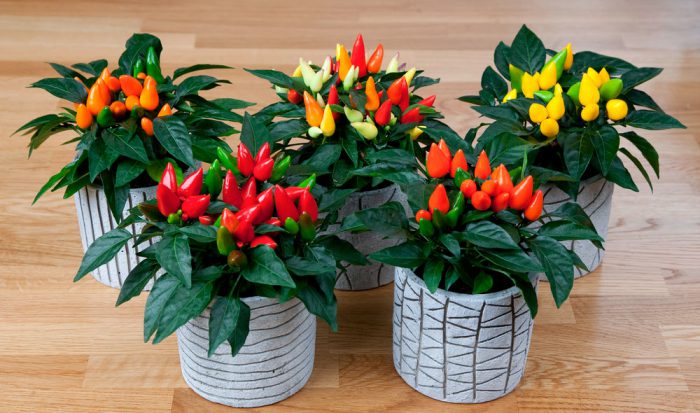
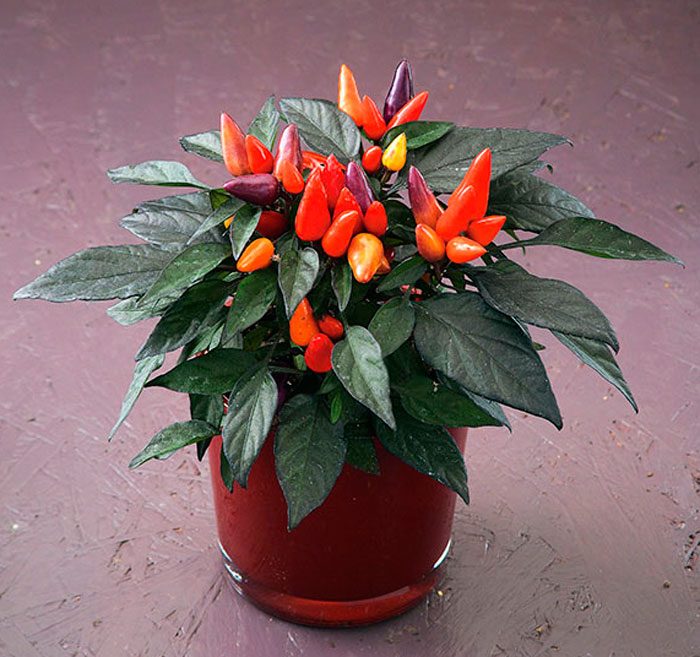
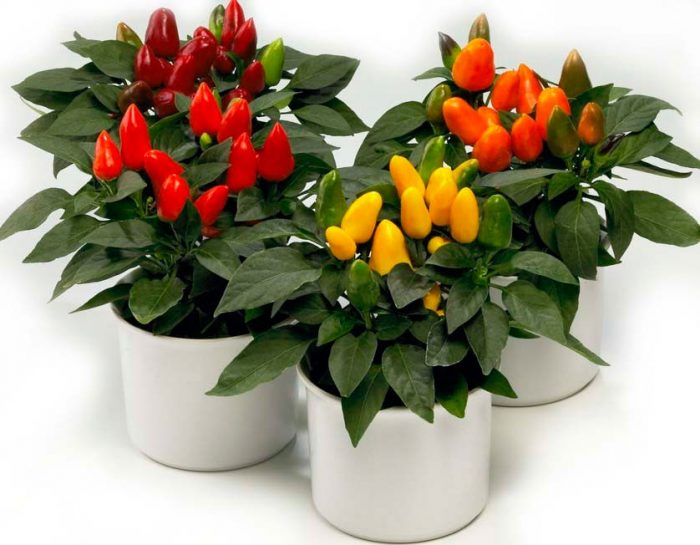
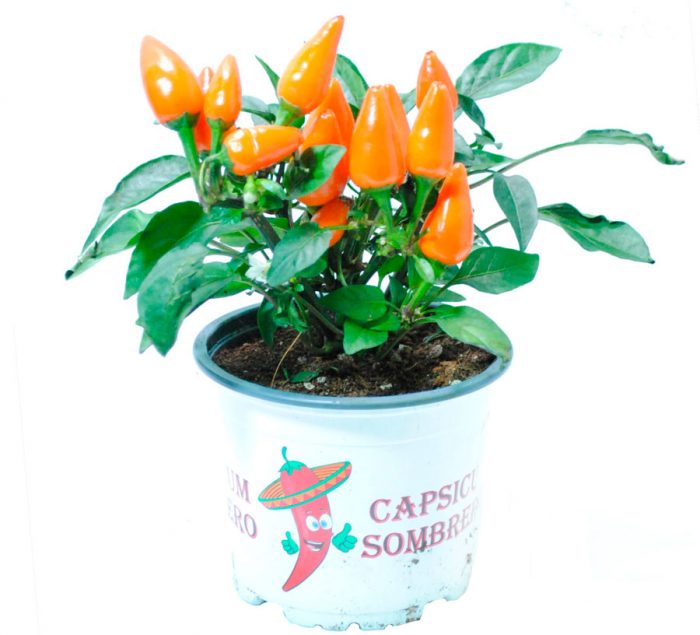
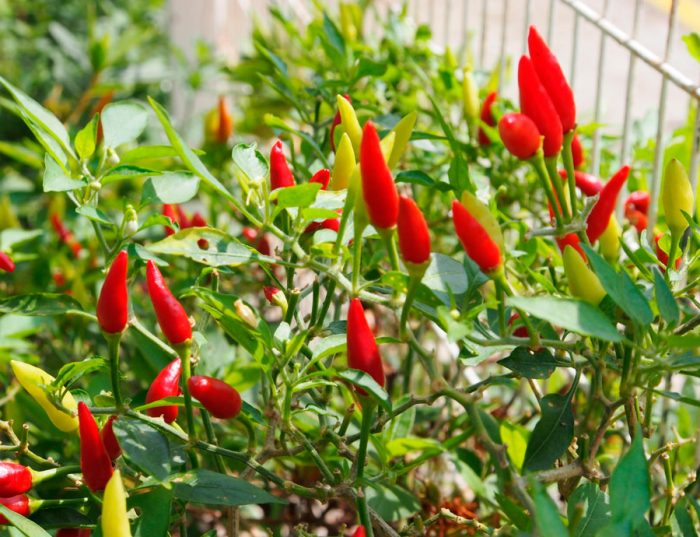
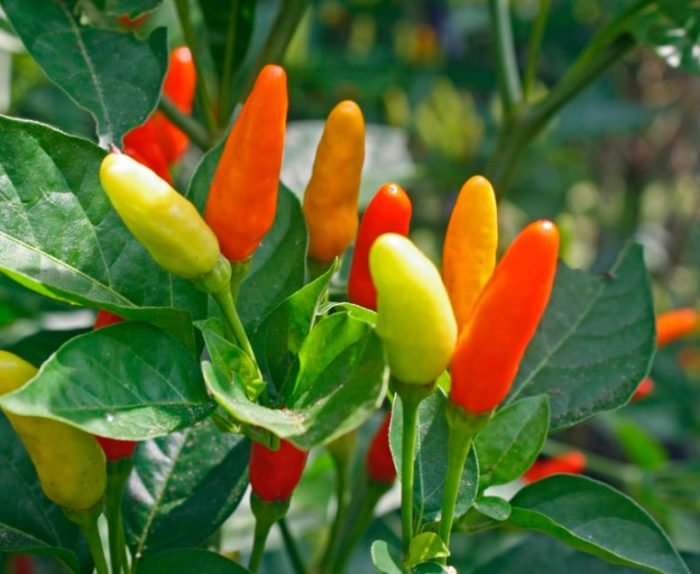
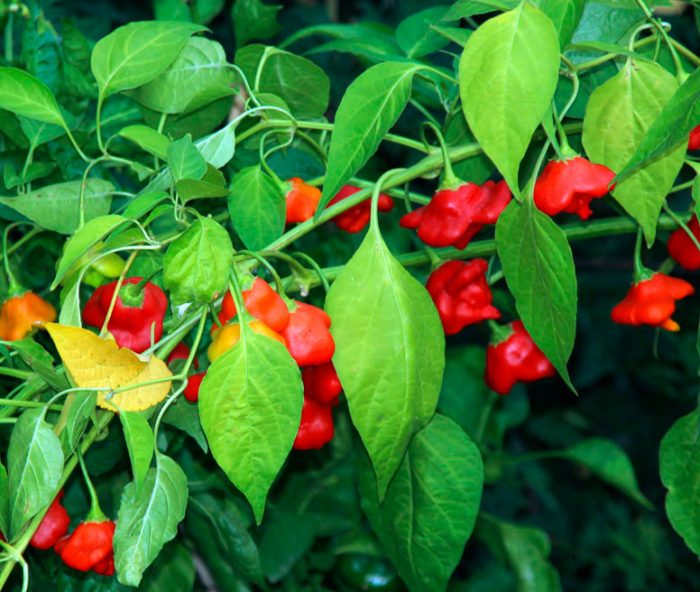
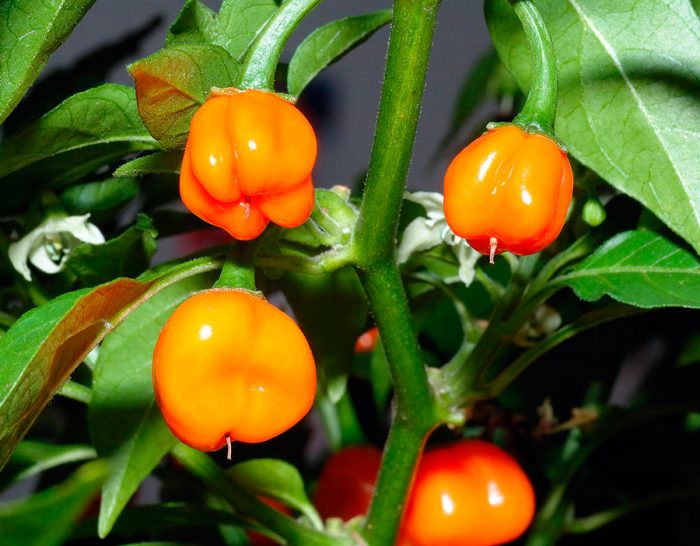
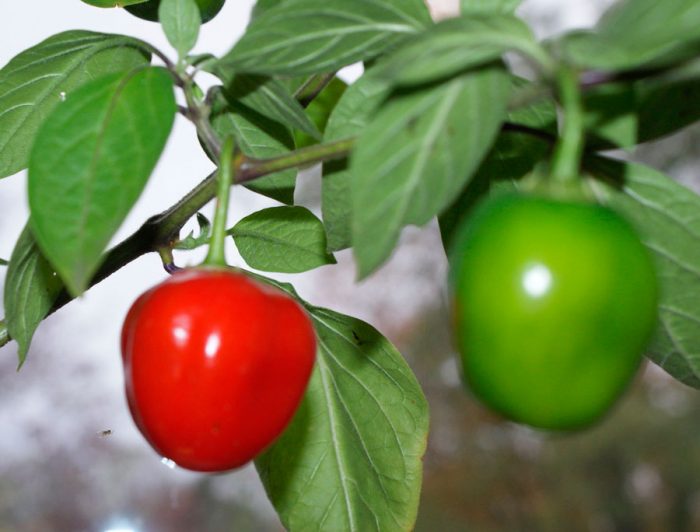
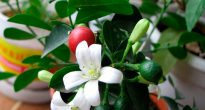




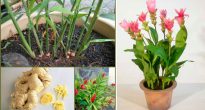

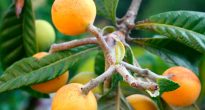


The house grows the same. Very tasty and hot pepper. And caring for it doesn't require much attention.